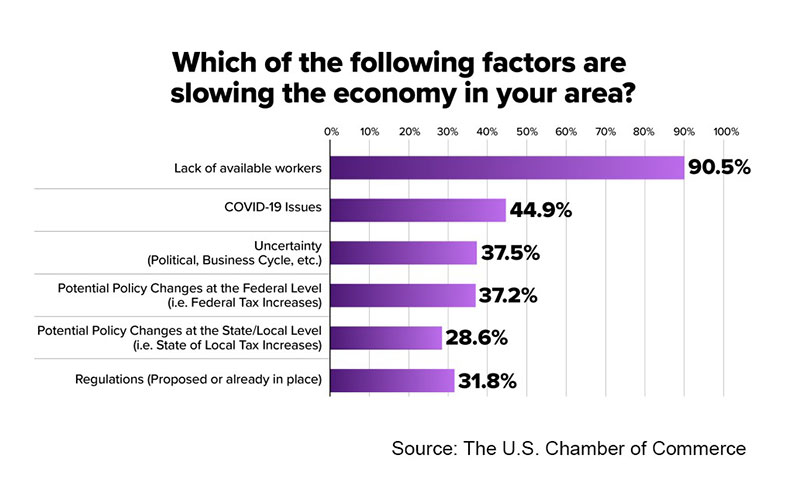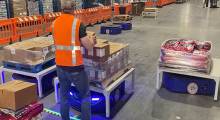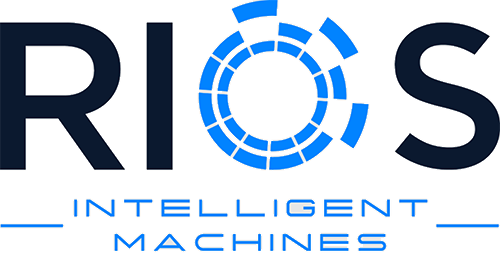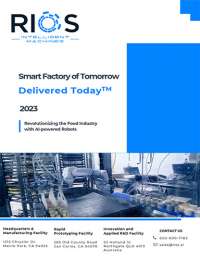The economy heats up and workers are not available to fill all the open positions. The U.S. Chamber of Commerce released, The America Works Report: Quantifying the Nation’s Workforce Crisis. Now labeled a ‘crisis,’ the labor shortage is impacting companies in all regions, every size, and all industries. Organizations are facing enormous obstacles to find workers and are frustrated as they try to fill open positions as they scramble to employ able-bodied people, many times forgoing skills and talent.
The Bureau of Labor Statistics jobs report fell below expectations and stated that there were 8.1 million job openings in the economy as of the end of March — an all-time high. That is more than 600,000 higher than at the end of February and the fastest growth rate since July 2020. So far, in 2021, employers have added 1.4 million. Businesses are hiring — if only there were workers ready, able, and willing to fill their open positions.
- 91% of small businesses trying to hire say they are struggling to find qualified candidates for open jobs.
- 90% of local and state chambers say worker shortages are now holding back their economies.
- 8.1 million unfilled jobs are open across America.
Retail, manufacturing, ecommerce, grocery, and logistics are industries notorious for high turnover and employment pressures. The talent shortage is not as new as the emphasis of lack of skilled labor. Now there is a shockingly limited supply of potential employees in the labor market.
As organizations adjust to meet customer demands, the reliability of the workforce is a continuous burden. Hiring and retaining women in the manufacturing workforce can also create a dynamic shift in filling the employment gaps, as currently only 30% of manufacturing employees are women. Warehousing positions typically have high churn, as these markets react to dramatic shifts in seasonal volume spikes. The organization struggle to meet headcount. Automation is a critical success factor to augment manual processes and allow organizations to leverage human capital as they maximize facility output.

Robotic technology is the paradigm shift for the future. Automation will continue to streamline operations and make a dramatic impact.
Hardware, IoT sensors, cloud computing, etc. are all becoming increasingly sophisticated to meet automation requirements of today’s manufacturing and fulfillment facilities. Dexterous AI-powered robots have evolved in sophistication and now easily perform where automation may not have been a practical option a few short years ago.
Robotic technology is showing positive impact to help ease the labor burden, and the RaaS (Robots-as-a-Service) model makes robotic automation a viable option for corporations of all scale. Forward-looking organizations are heavily investing in robotic workcells to maximize output and streamline operations. As consumer demand for goods continues to skyrocket, American companies will continue to balance robotic automation integration and leverage human capital.
Article topics
Email Sign Up



















